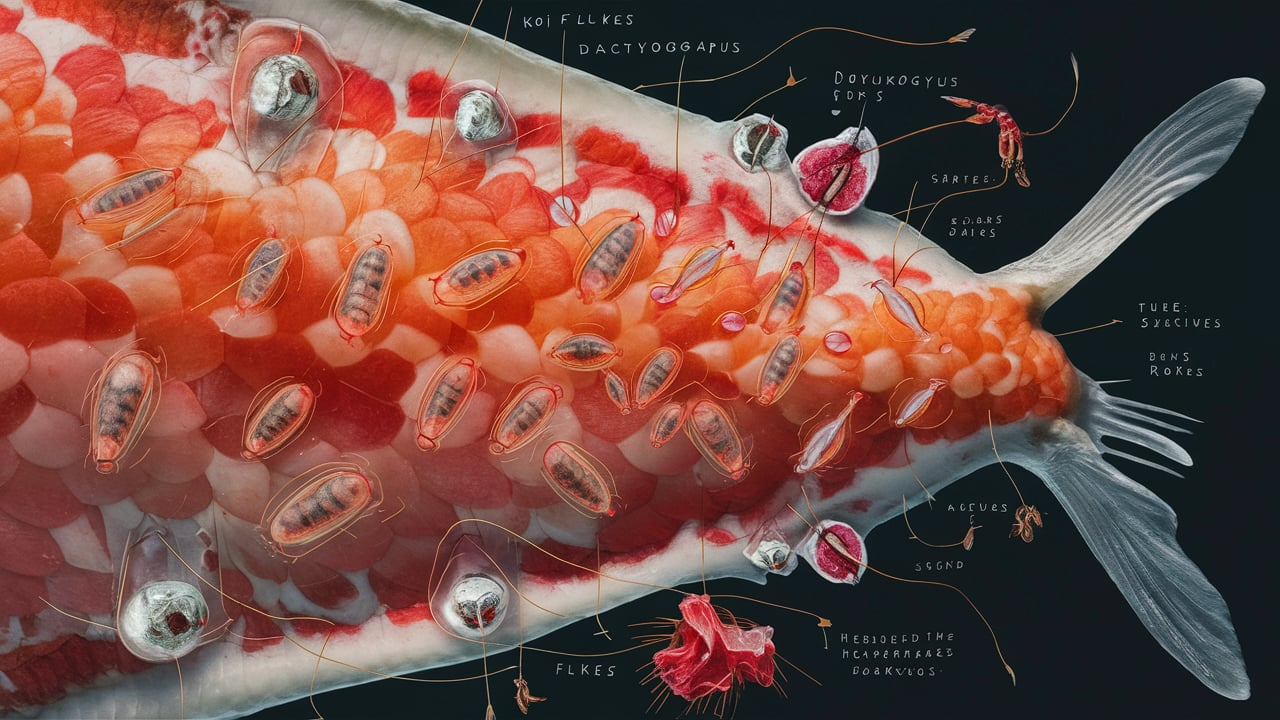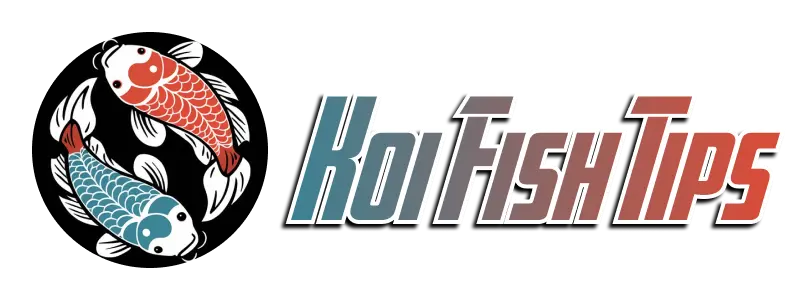The world of koi keeping is a journey filled with beauty and wonder, but like any journey, it can have its challenges. One such challenge is the presence of parasites, particularly flukes on koi. This guide, brought to you by Koi Fish Tips, will equip you with the knowledge to understand flukes, identify their presence, and effectively combat them, ensuring the health and vitality of your aquatic companions.
Understanding Flukes on Koi: A Journey into the Microscopic World
Flukes are parasitic flatworms that can infest the skin, gills, and internal organs of koi. These microscopic invaders can cause a range of health problems, from mild irritation to severe illness, and even death.
Types of Flukes
- Skin Flukes: These flukes attach to the skin of fish, causing irritation, inflammation, and sometimes open wounds. They can be identified by their small, white, or yellowish spots on the skin.
- Gill Flukes: These flukes attach to the gills of koi, interfering with their ability to breathe. They can cause respiratory distress, lethargy, and even death.
- Internal Flukes: These flukes live within the internal organs of fish, such as the intestines or bladder. They can cause digestive problems, weight loss, and other health issues.
Life Cycle of Flukes
Flukes have a complex life cycle that involves multiple stages and hosts. The cycle typically begins with the release of eggs from an infected koi. These eggs hatch into larvae that infect snails. The larvae mature within the snails and eventually emerge as cercariae, which can then infect koi.

Identifying Flukes on Koi: Recognizing the Signs of Infestation
Early detection is crucial for effectively treating flukes. Here are some signs that your fish may be infected with flukes:
- Skin Lesions: Look for small, white, or yellowish spots on the skin of your koi, which may indicate skin flukes.
- Respiratory Distress: If your fish are gasping for air or exhibiting labored breathing, it could be a sign of gill flukes.
- Lethargy: Fish infected with flukes may become lethargic, less active, and less interested in food.
- Weight Loss: Internal flukes can cause digestive problems and weight loss.
- Abnormal Behavior: Koi infected with flukes may exhibit abnormal behavior, such as rubbing against objects or swimming erratically.
Treating Flukes on Koi: A Journey to Restoration
Once you suspect your koi may have flukes, it’s crucial to act quickly to prevent the infestation from spreading and causing further harm. Here are some effective treatment options:
Medications
- Praziquantel: This medication is effective against a wide range of flukes and is available in various forms, including tablets, granules, and liquid solutions.
- Flubendazole: This medication is also effective against flukes and is available in tablet form.
- Formalin: Formalin is a potent chemical that can be used to treat flukes, but it should be used with caution, as it can be toxic to koi.
Other Treatment Methods
- Salt Baths: Salt baths can help to kill flukes and reduce their impact on your fish. Consult with a veterinarian or experienced koi keeper for proper salt bath procedures.
- Snail Control: Controlling snail populations in your pond can help break the fluke life cycle, as snails are an intermediate host.
Prevention
- Quarantine New Koi: Always quarantine new koi for at least two weeks before introducing them to your main pond to prevent the introduction of parasites.
- Maintain Good Water Quality: Clean, well-filtered water can help prevent the growth of parasites and maintain the health of your koi.
- Regular Inspections: Regularly inspect your koi for any signs of parasites, and take prompt action if you notice any issues.
Frequently Asked Questions about Flukes on Koi
How can I prevent flukes?
The best way to prevent flukes is to maintain good water quality, quarantine new koi, and regularly inspect your fish for any signs of parasites.
Are flukes contagious to humans?
Flukes are not typically contagious to humans. However, it’s always a good idea to wash your hands thoroughly after handling koi or their environment.
How do I know if my koi have flukes?
If you suspect your fish may have flukes, it’s best to consult with a veterinarian specializing in aquatic animals. They can examine your koi and recommend appropriate treatment options.
Conclusion
Flukes on koi are a common problem that can affect the health and well-being of your beloved fish. By understanding the nature of these parasites, recognizing their signs, and implementing effective treatment and prevention strategies, you can ensure the health and vitality of your koi.

Bài viết liên quan
Baby Koi Fish – A Journey Of Growth And Beauty
Imagine a tiny, shimmering speck of color darting through the water, a miniature version of [...]
Jul
Best Food For Koi Fish: What To Feed And What To Avoid
Koi fish, with their vibrant colors and elegant movements, are a captivating addition to any [...]
Jul
Do Koi Fish Eat Bread? The Truth About Feeding Your Fish
Do koi fish eat bread? Is it a suitable food for koi? This comprehensive guide, [...]
Jul